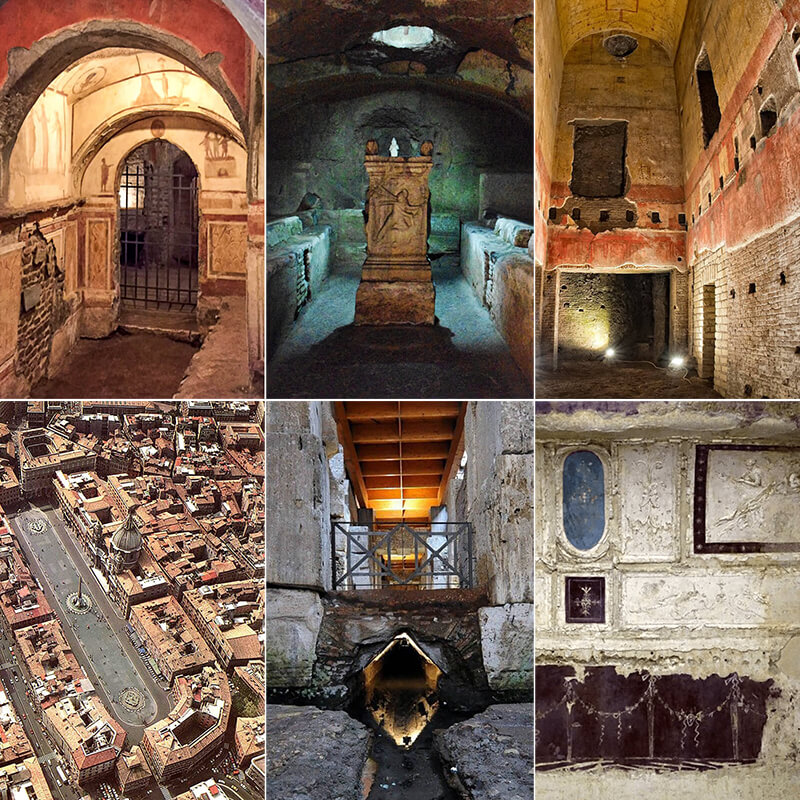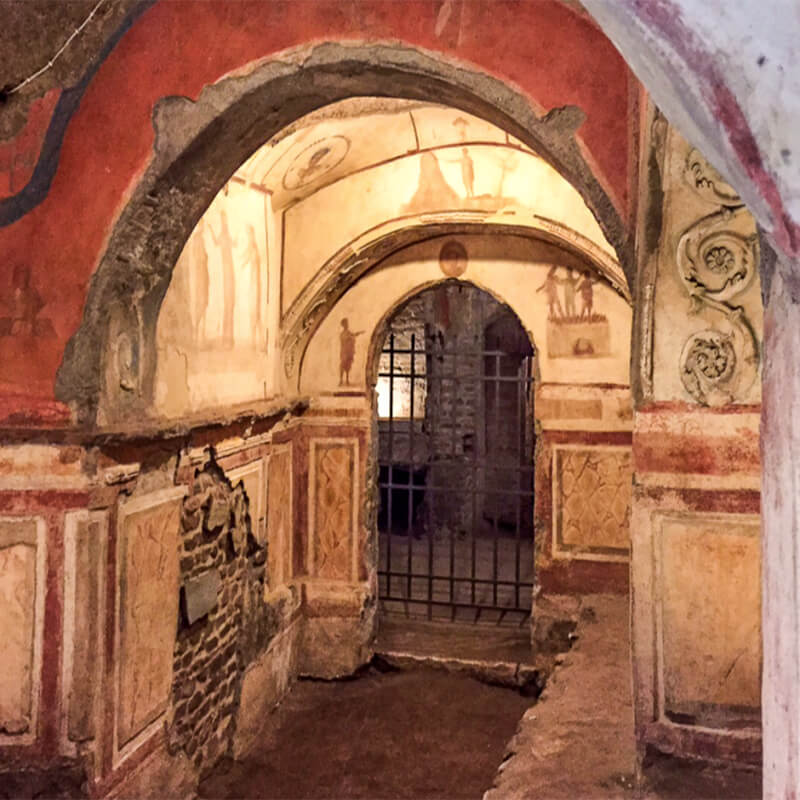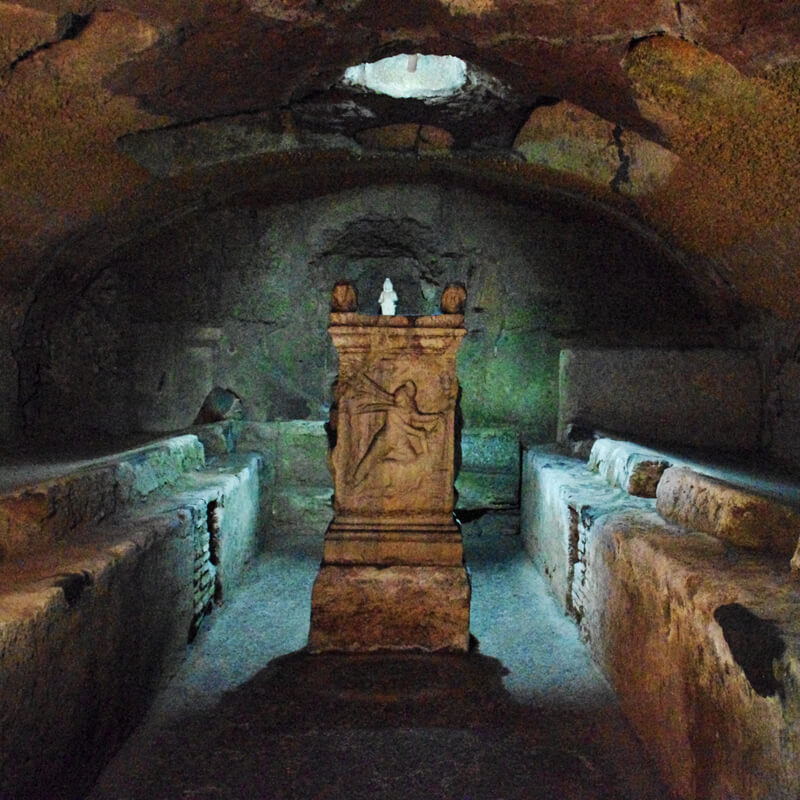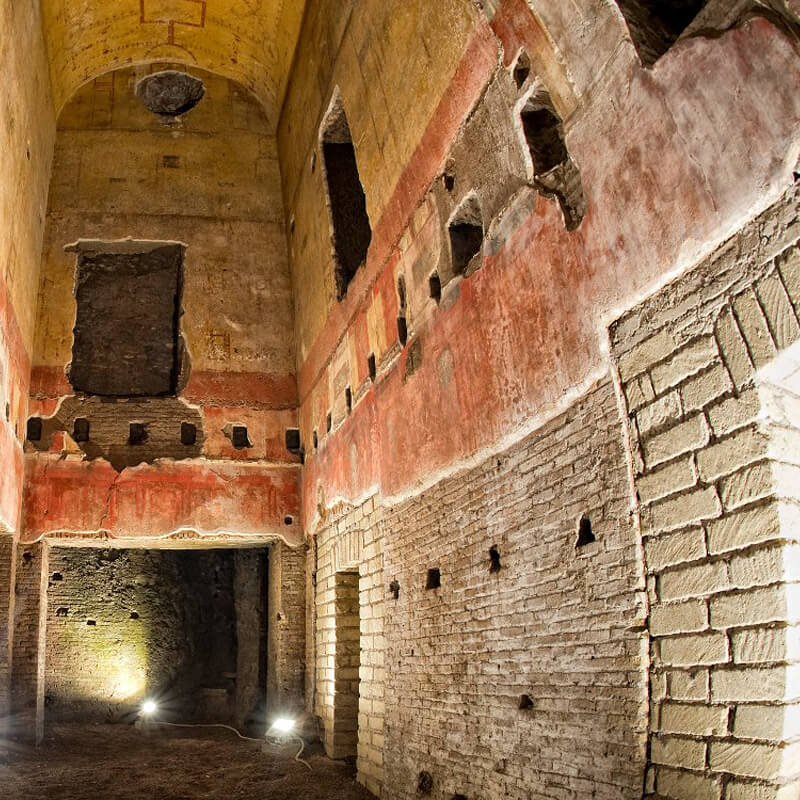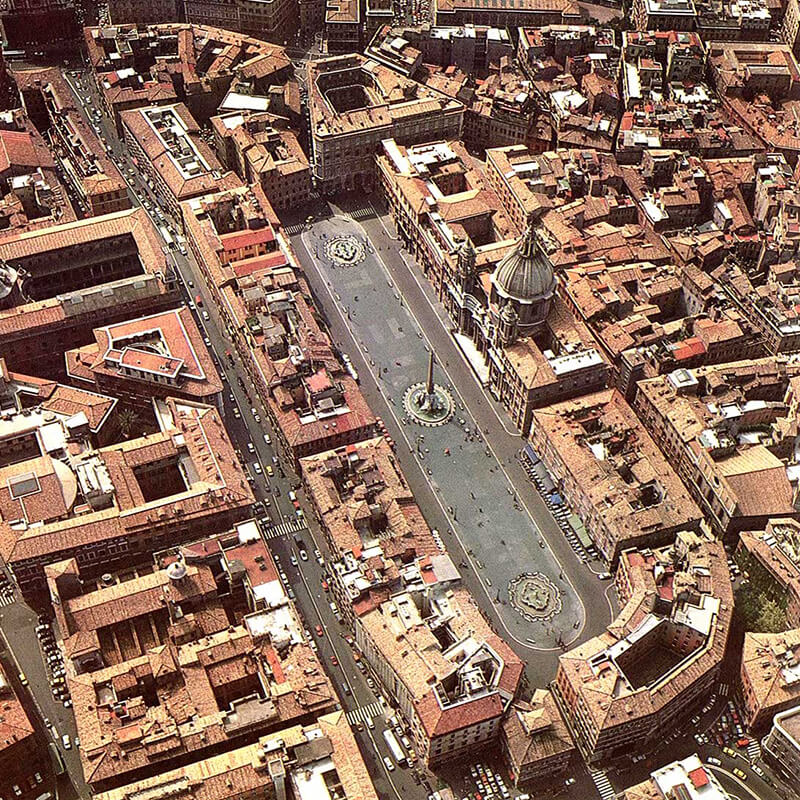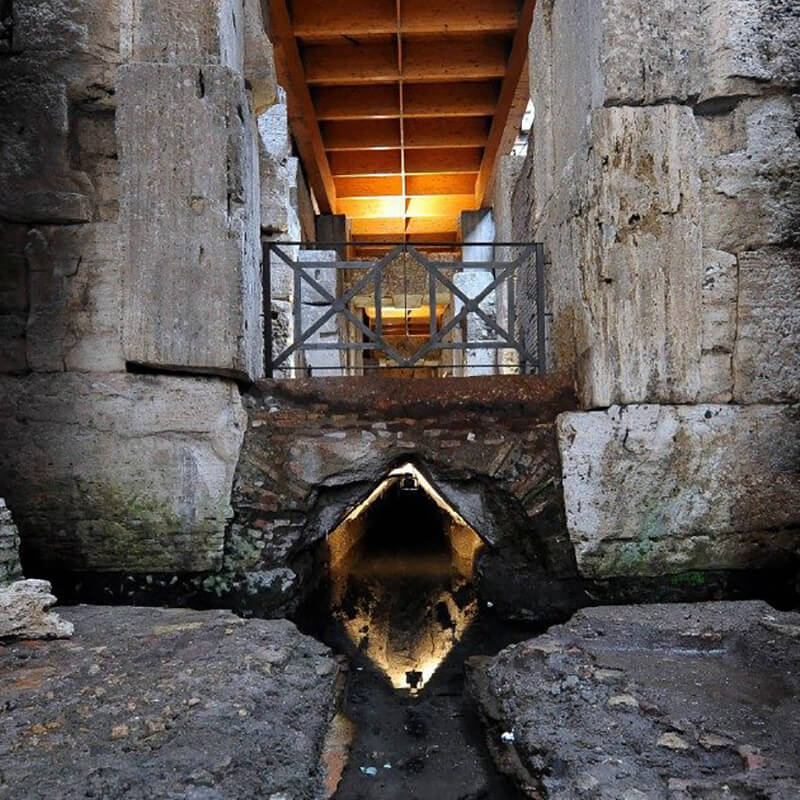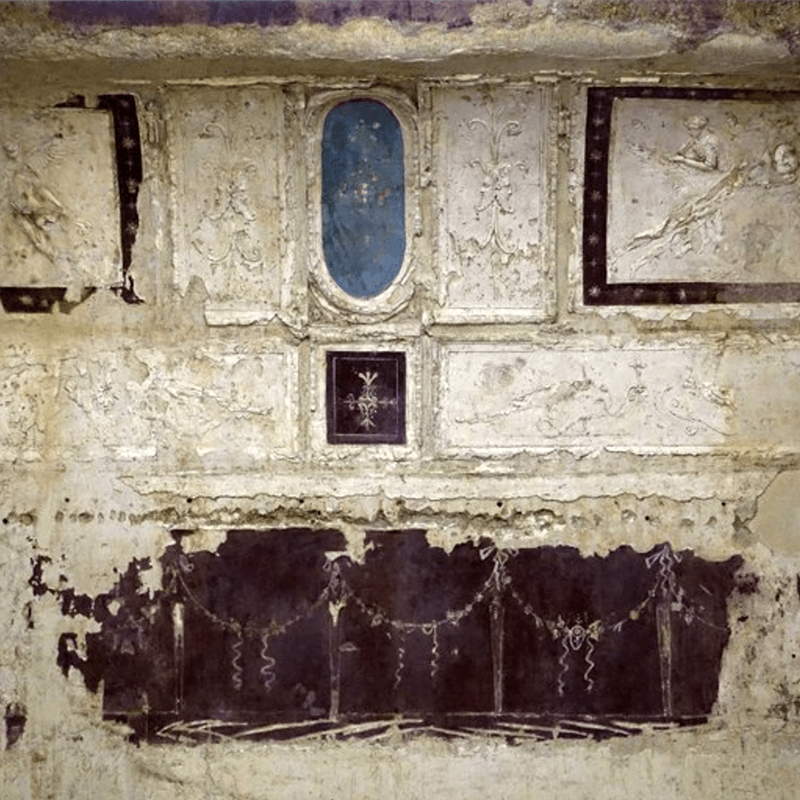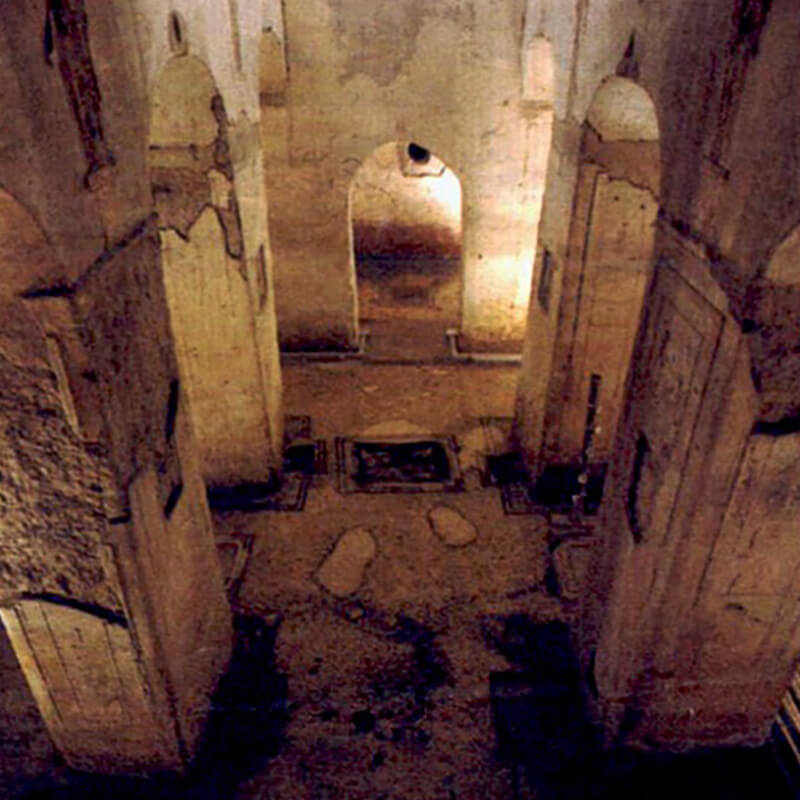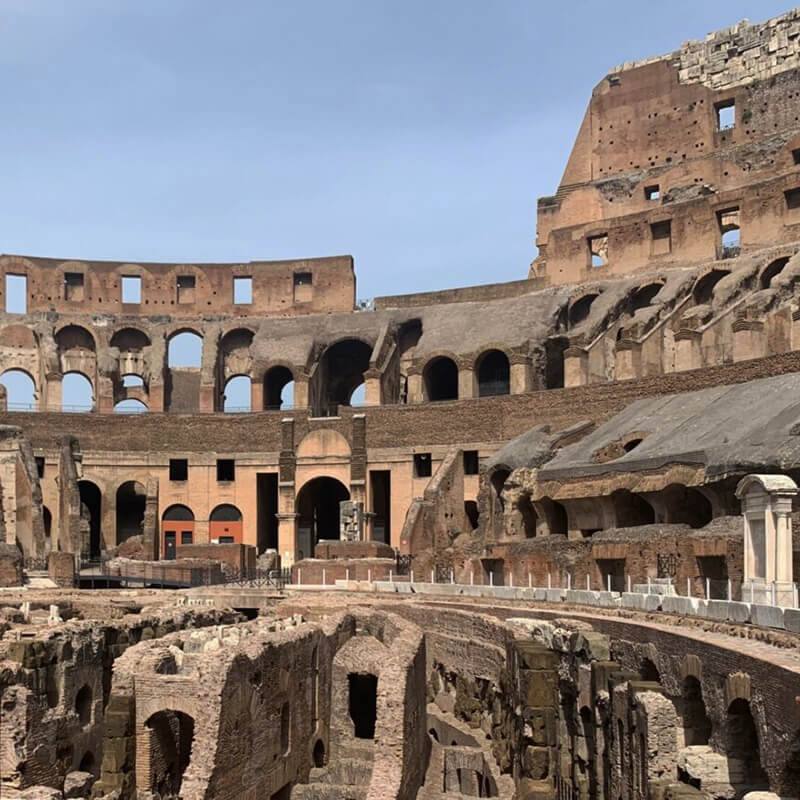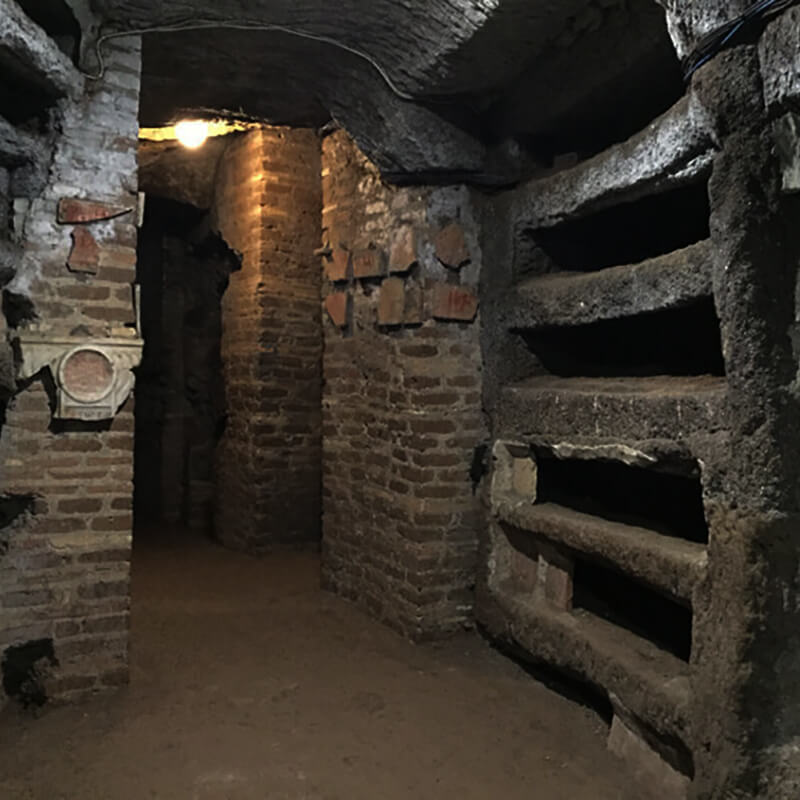We admit, reluctantly, that there are certain things that Roman tourist guides always say. We are pretty sure that if you have joined a tour in Rome (hopefully with us) you will have heard your tour guide say that the peculiar thing about the Eternal City is its stratification, which makes it seem like a typical Italian… lasagna! We know that a metaphor like this may seem a bit strange, so we thought of a perhaps more elegant metaphor: Rome is like a book. This means that what you see on the surface is just the tip of the iceberg, and when you have the chance to “turn the page” and go a little below, you can read what happened in the ” previous chapter“.
There’s so much buried underground in Rome that it’s easy to get confused and not know where to start, so here’s our list of 6 underground sites in Rome that you absolutely can’t miss!
1. The Catacombs.
To protect Roman citizens from disease, bodies had to be buried outside the city walls: the living and the dead could not live together. This is why the catacombs, the underground cemeteries, are still outside the city center. To make the most of the space, the Romans had an idea: instead of extending the structure of the cemeteries horizontally, they decided to go down to the bottom. Same concept as skyscrapers, but instead of going up the ancient Romans started digging.
And they dug really hard! It is estimated that in the city of Rome there are more than 150 kilometers of underground tunnels, and many of them can actually be visited. The most famous catacombs? Definitely the Catacombs of San Sebastiano, along the Appian Way. Following, the Catacombs of San Callisto, the Catacombs of Priscilla, the Catacombs of San Sebastiano, the Catacombs of Pretestato and the Catacombs of Santa Tecla.
2. The Basilica of San Clemente.
There was an ancient Roman building, built immediately after Nero‘s great fire a few steps from the Colosseum. The building was, no one knows why, canceled by the construction of a Roman house, which was built right above it. The house certainly belonged to a wealthy family, whose members were followers of Mythra, an ancient god from the East about whom we have talked a lot in our blog, with articles dedicated to cult of Mithras and other articles that explore the main mithraea of Rome, especially the most preserved ones found inside of the archaeological area of Ostia Antica, such as the Mitreum of Felicissimo, the Mitreo delle Sette Porte and the Mitreo delle Sette Spheres.
Returning to the house, we know that the family that built it was devoted to Mithras because they built a mithraeum right inside their house, and they were probably the ones who hosted the ceremonies and officiated them. But then the house was covered up in the 4th century. AD with the construction of a church, which was almost destroyed by an earthquake in the 9th century and then, again, deeply damaged in the 11th century by the Normans, who were besieging Rome.
At that point, when choosing between restoring the old church or building a new one, the architects of the time decided to build a new one, right on top of the ruins of the old one. So, surprisingly, the same site was occupied by a building, and then a house, and then a church, and then a new church, the Basilica of San Clemente. Today it is possible to go down to the bottom and slowly relive the history of the most incredible block you have ever visited.
3. The Domus Aurea.
The emperor Nero was decidedly alien to any decency. After the great fire of Rome in 64 AD. he decided to confiscate the central area of the city dramatically devastated by the flames to build his “humble and modest” residence, so humble and modest as to be called “Domus Aurea“, the Golden House: probably for the light that penetrated from the windows of the villa and hit the splendid surfaces of the walls decorated with gold leaf and mother of pearl.
The Domus Aurea covered an area of 80 hectares (more or less double the size of the Vatican City) but unfortunately the only clear testimony is a splendid underground pavilion on Colle Oppio, right in front of the Colosseum. After years of restoration, today it is possible to explore the Domus Aurea with a literally immersive visit. In fact, an itinerary enriched by videos and virtual reality experiences has been created that will make you go back in time and live the experience of walking through the rooms of the splendid villa of Emperor Nero.
4. The Stadium of Domitian.
Take a map of Rome and try to find Piazza Navona: you will see that the layout of the square is really strange. It is not a “square”: its oblong shape makes it so different from all the other squares in Rome, and this is because in Rome, even in this case, what is buried underground in many cases still influences what is found in surface. Just go down a few steps below Piazza Navona to see the foundation of the monumental stadium built by Emperor Domitian.
The Stadium of Domitian was a huge stadium that once stood exactly where Piazza Navona is located today. During the Middle Ages many ancient Roman buildings became quarries of building materials: the structure of the Stadium of Domitian was slowly sacked but, at the same time, new buildings were built on its foundations. The result was this incredible spacious square, today adorned by the Fontana dei Quattro Fiumi created by Bernini, genius of the Roman Baroque.
5. The Hypogeum of the Colosseum.
As we have seen in our recent articles, which went into the exploration of the undergrounds of Colosseum, the show on stage at the Flavian Amphitheater was breathtaking, but it would have been impossible to create those spectacular games without the scenic machine of the Colosseum, engineered to perfection.
Right under the bloody arena you could find an intricate labyrinth of corridors, called the hypogeum. Corridors lined with winches and elevators (basically cages that can be lifted), which had the important function of lifting animals, painted scenarios, fake trees and fake natural elements that could be used to recreate exotic atmospheres and scenarios, such as those in Africa, right in the center of Rome.
This sophisticated engine was “man-powered”: there were hundreds of slaves who turned the winches and lowered the trapdoors which were then used by the animals as ramps to reach the arena floor. It’s impossible to get a sense of how terrible it was for them to work in that smelly, pitch-black environment: no light, no air to breathe, wild animals roaring and smoke from candles and torches. Today it is possible to visit the hypogeum of the Colosseum, and imagine how animated that environment must have been during the shows, hidden from the eyes of the spectators of the Colosseum.
6. The Underground Basilica of Porta Maggiore.
The underground Basilica of Porta Maggiore is a basilica from the Tiberian era (between 14 and 54 AD) located near Porta Maggiore, and is considered the oldest pagan basilica in the whole of the West . Its discovery occurred by chance in 1917, following the collapse of a vault of the basilica, during the construction of the railway viaduct of the Termini station and the surface tram line serving Via Prenestina.
To build the Basilica of Porta Maggiore, the shapes of the columns were excavated underground, into which a cement aggregate was subsequently poured which, once consolidated, allowed the creation of the vault and an opening at the top, from which it was then emptied the earth inside. The basilica has a three-nave structure with a central apse and measures approximately 12 meters long, 9 meters wide and 7 meters high. The entrance to the underground basilica of Porta Maggiore is half-hidden and almost always closed and unexplored, and it’s not the original entrance. Since 2015 it has been possible to visit the basilica only on Sundays and by reservation only.
The ceilings and walls are adorned with stuccos representing mythological and esoteric scenes with the theme of the destiny of the soul and the secrets of initiation into the Mysteries. Among these: Ganymede kidnapped by Zeus, Medea offering a magical drink to the dragon who guards the golden fleece, the poet Sappho throwing herself into the sea, and a triumph of stuccos representing winged victories, medusa heads, children playing , souls led to the underworld, a marriage rite, cult objects, animals and other neo-Pythagorean symbolism. Probable work of a mystical-esoteric sect, its functionality is still uncertain: tomb, funerary basilica, nymphaeum or Neo-Pythagorean temple. The magical and mysterious nature of the basilica has fuelled legends that see it as the home of ghosts.
Interested in discovering some of the underground gems of Rome? We won’t be able to guide you in all of them, because for some places the guided tour service is the exclusive prerogative of the Superintendence of Cultural Heritage, but we can still support you in your exploration of the gems of Rome, perhaps combining our most popular tour, the guided tour of Rome Archaeological, or one of our tours and guided visits in Rome and its province.

